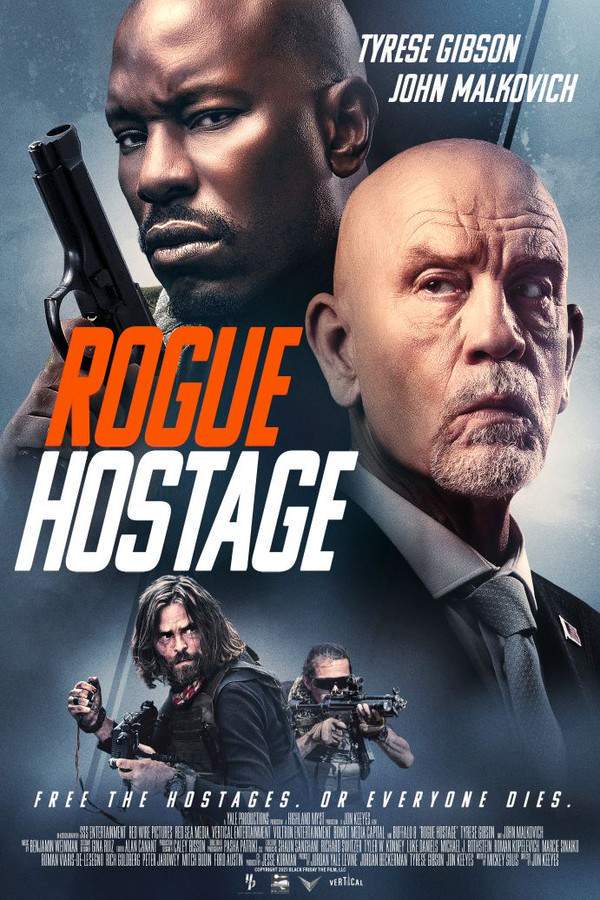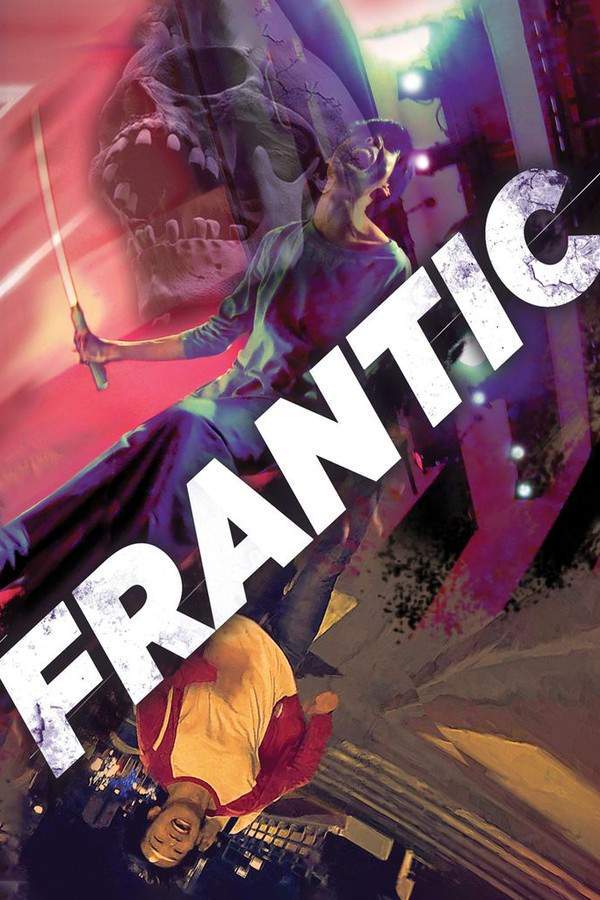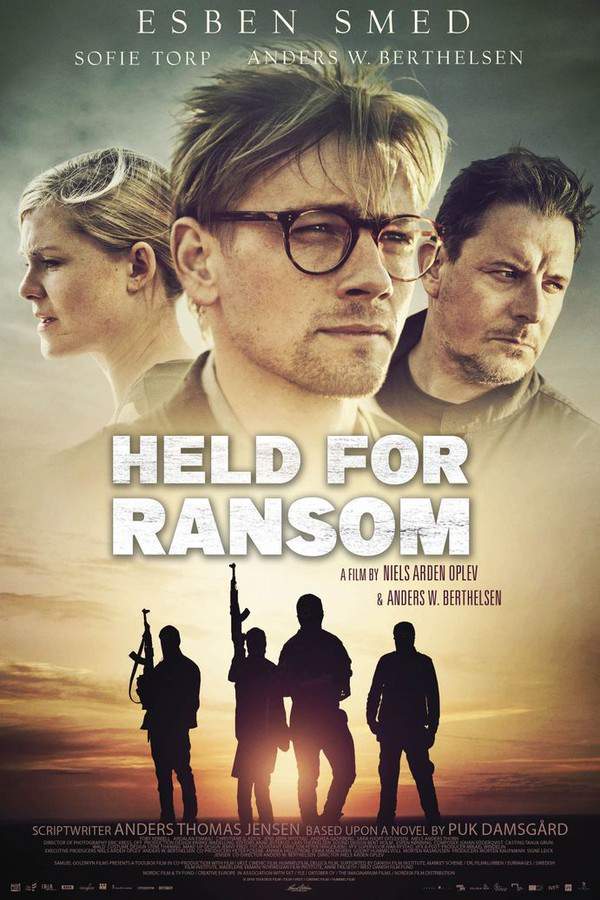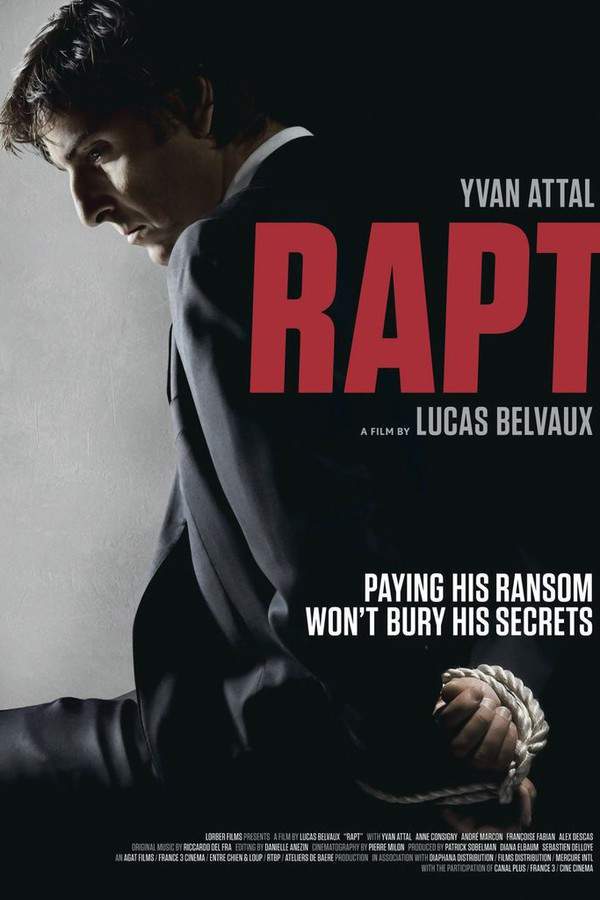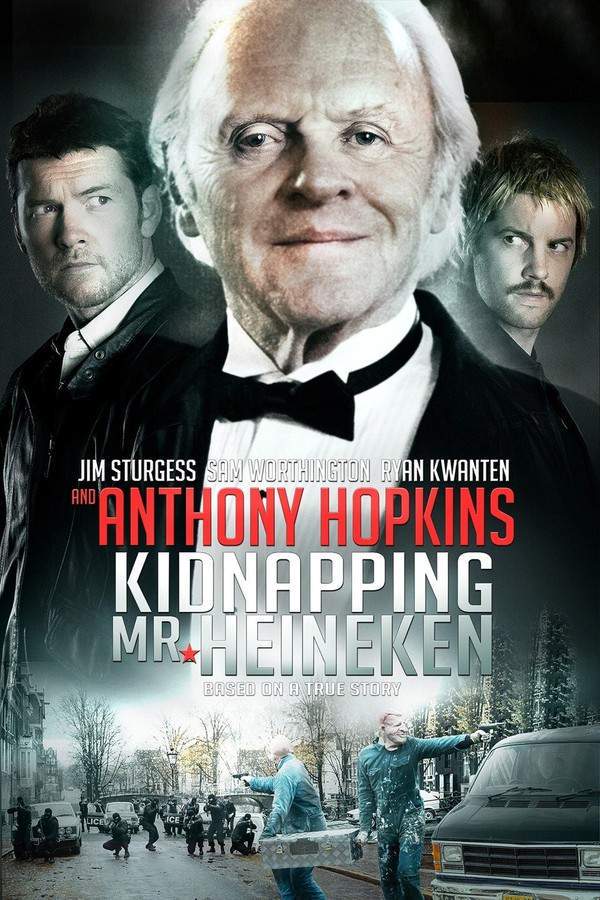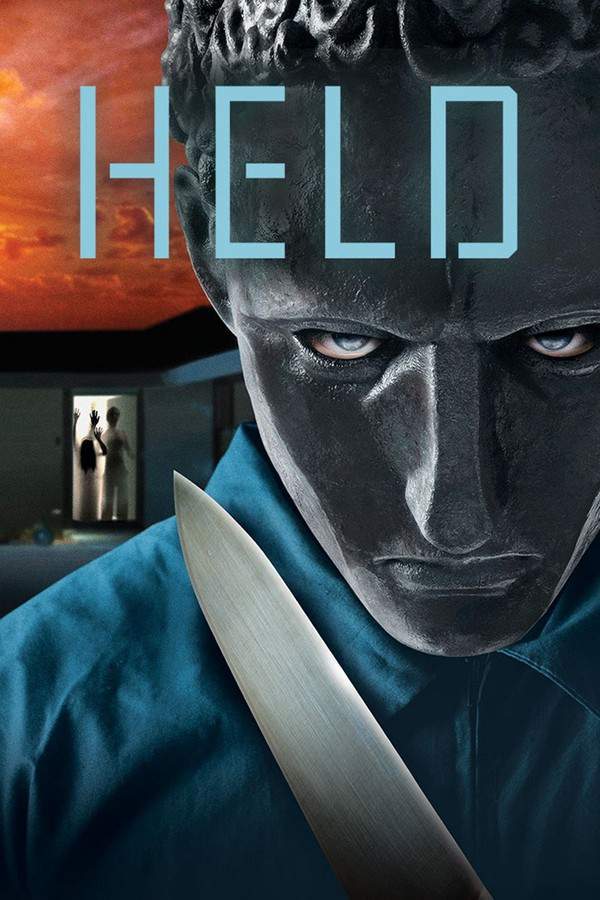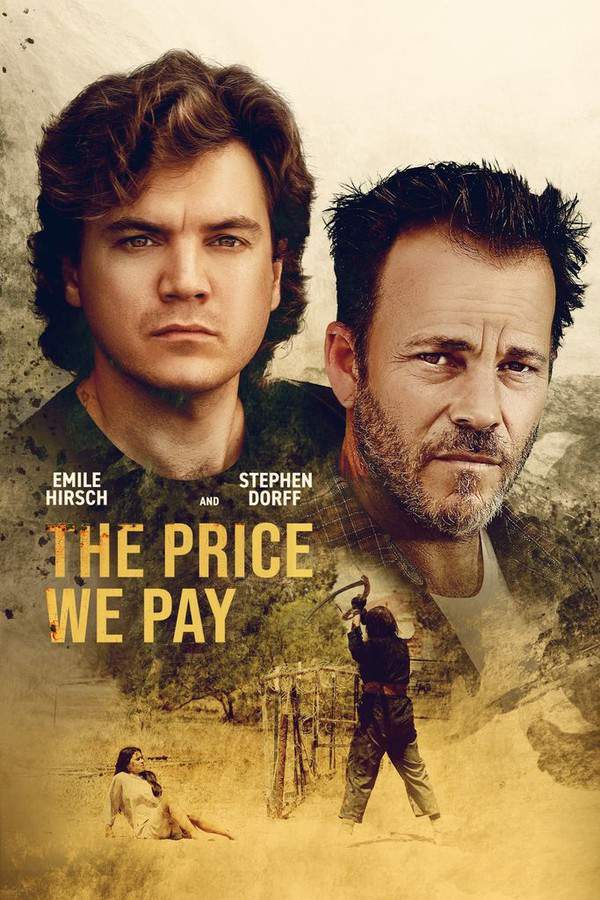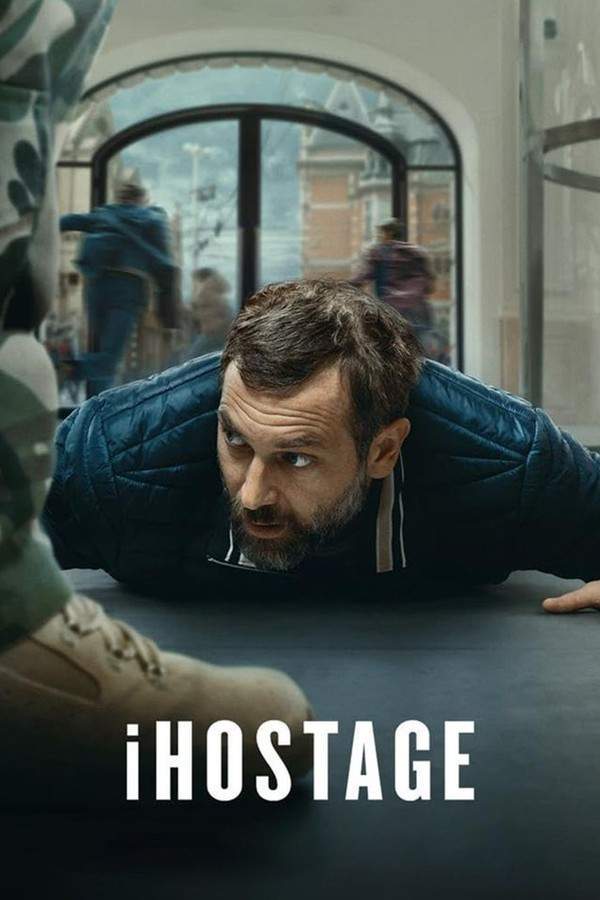
iHostage
Inspired by the 2022 hostage crisis at Amsterdam's Apple Store, this gripping thriller follows a Bulgarian man caught in a dangerous situation when an armed assailant takes the building’s occupants hostage. The film explores the event through the perspectives of the hostages, the attacker, and the first responders, delivering a tense and emotional portrayal of the ordeal.
Warning: spoilers below!
Haven’t seen iHostage yet? This summary contains major spoilers. Bookmark the page, watch the movie, and come back for the full breakdown. If you're ready, scroll on and relive the story!
iHostage (2025) – Full Plot Summary & Ending Explained
Read the complete plot breakdown of iHostage (2025), including all key story events, major twists, and the ending explained in detail. Discover what really happened—and what it all means.
On a busy morning at Amsterdam Centraal, a routine start spirals into tension as a man named Ilian Petrov, Admir Sehovic, arrives on a train, checks into a nearby hotel, and soon faces a nagging worry from an ordinary detail he can’t shake: he has misplaced his AirPods. After handing over his passport, Ilian reveals a Bulgarian origin and a drawer full of professional obligations waiting in the city. He takes two prescribed pills for a heart condition, answers a call from his wife on speaker, and then discovers that the case for his AirPods was left behind on the train. The mundane rhythm of travel meets a sudden sting of fear as the day’s quiet begins to tilt toward something unseen and potentially dangerous.
That same morning, the Apple Store becomes the focal point of human quirks and small troubles that collide with a far more dangerous reality. A young man named Lukas, portrayed by Robin Boissevain, sits waiting on a MacBook diagnosis, while a mother and her daughter wander the aisles, hoping to upgrade a phone. Ilian, in his hurry, buys a fresh pair of AirPods, and the scene is interrupted by the arrival of a man in a dark jacket and hoodie who moves with a purpose that unsettles the polite hum of the store. The store’s front desk greets him with the routine questions of a service encounter, but the tension in his demeanor hints at something far more perilous than a simple purchase.
In moments, the calm shatters. The intruder reveals a gun and delivers a brutal stun of fear that sends most customers scrambling for the doors. The chaos narrows to a single space: Ilian becomes the last person inside the shop as the gunman begins to enforce his demand. A quiet voice of courage emerges from Mingus, a store clerk who, earlier, had moved swiftly to pull the mother and daughter into a closet locked behind a digital code. He stays hidden, and his instincts might be the corner of a turning point in the crisis: Mingus, Emmanuel Ohene Boafo, becomes an unseen anchor for those trapped and for the police that circle the building.
The man who holds the line is Ammar Ajar, the hostage-taker whose grievances against the government, the police, and society culminate in a demand that unsettles every bystander. With a bomb jacket strapped on and a demand for 200 million euros in Bitcoin, Ammar insists on safe passage from the scene before he will release any hostages. The negotiation becomes a delicate dance: Lynn, the police negotiator, takes charge and begins to peel back the layers of Ammar’s anger to reveal a human being at the core of the violence. Lynn, played by Loes Haverkort, works to pace the conversation, to understand the man behind the gun, and to keep the line open between fear and possibility as the clock ticks.
The siege expands beyond the four walls of the Apple Store. With roughly seventy others trapped on the upper floors of the surrounding building, the stakes intensify as the police must decide how to safeguard those civilians without provoking Ammar into a catastrophic move. A social media post from a hostage adds an unpredictable and dangerous layer to the crisis, drawing media attention and heightening the urgency to rescue the higher floors before the situation unravels further. The police captain orders the company responsible for mobile networks to pull the post offline, while a line is drawn between the impulse to broadcast and the wiser option of restraint in a real-time emergency.
In the store, Mingus proves to be a quiet force under pressure. Calmly, he maintains contact with the police, relays information about the shop’s layout, and helps the officers map a path to safety. When the woman in the closet experiences a panic attack, Mingus calls a doctor through the police to guide him over the phone, confirming that no heart trouble is present and keeping the group steady. The moment showcases not only his quick thinking but also his humanity, a balance of bravery and restraint that prevents panic from spreading among the hostages. The group’s safety becomes a shared responsibility—everyone in the store, and Mingus, who keeps the others grounded as fear roars outside.
Winston, a member of the DSI squad portrayed by Louis Talpe, enters the scene under personal strain. He is on leave, driving with his family when the crisis erupts, forcing him to make a rapid, morally loaded choice that will pit his professional duties against his instinct to protect his loved ones. The inner conflict he faces underscores the human cost of such crises, even for seasoned responders who know the risks and the protocols that govern their actions.
A critical moment arrives when Ilian, needing a simple thing—water—interacts with Ammar in an unexpected way. Ammar complies, and Ilian uses the moment to slip toward the edge of the store toward the waiting police unit. The tension peaks as Ammar pursues, and a police takedown seems imminent but perilous because of the explosive jacket. A tactical car then rams Ammar, bringing the standoff to a violent, abrupt crest. The assailant is taken down, the store is secured, and Ilian is treated by medical responders while the others on the upper floors are rescued by a dedicated special unit. The bomb jacket proves to be a fake, a cruel deterrent rather than a functional device, and Ammar dies the next day from the injuries inflicted during the collision.
Across the tense narrative, the film threads a human undercurrent through Mingus’s emotional reaction. After the crisis subsides, Mingus—who had kept a calm head through the closet and the calls to police—breaks down in the back seat of a police car, a powerful reminder that courage in the moment coexists with the relief and shock that follow. Ilian, newly equipped with his AirPods and a song that moves him, is left to confront the fragility of life and the unpredictability of violence, a stark reminder that even ordinary days can become extraordinary trials.
This account reflects a real event from 2022: the Apple Store incident in Amsterdam was inspired by the hostage crisis led by Abdel Rahman Akkad, a reminder that the line between fiction and reality can blur in a crisis drama that aims to examine the human responses under extreme pressure. The film closes on a note of lingering emotion rather than neat resolution. Ilian returns to the quiet after the storm, his heart still racing, and Mingus’s quiet resilience lingers as a testament to courage found in everyday places. The story invites viewers to reflect on what it means to be saved, what it costs to save others, and how quickly ordinary people can become extraordinary under fire.
Last Updated: October 01, 2025 at 13:04
Ending Explained – What Happens at the End of iHostage?
Still wondering what the ending of iHostage (2025) really means? Here’s a spoiler-heavy breakdown of the final scene, major twists, and the deeper themes that shape the film’s conclusion.
In the climax of iHostage, the tense standoff finally reaches its breaking point when Ilian cleverly manages to engage Ammar, the hostage-taker, with a simple act of deceit. As Ammar is distracted when he bends down to pick up the water bottles Ilian had requested, Ilian seizes the opportunity to escape. He then runs towards the police outside the store, prompting Ammar to chase after him in a desperate attempt to take him back as a hostage. Just at that moment, a police vehicle rams into Ammar, neutralizing him and preventing him from detonating his bomb jacket — which was ultimately revealed to be fake. This collision allows the police to subdue Ammar, who, after being knocked out, is taken to the hospital, where he later dies from his injuries the next day, ending the immediate threat he posed.
In the aftermath, the situation is left with a sense of complex relief and tragedy. Ilian, having escaped physical harm, is deeply shaken by the ordeal; we see him breaking down emotionally at the end, listening to his music with his AirPods, overwhelmed by the trauma of his experience. Mingus, the brave store clerk who kept his composure and helped coordinate the rescue, also breaks down in a police car, acknowledging the emotional toll of the crisis. These moments highlight how the harrowing event continues to haunt the survivors, underlining that even when danger is over, the psychological scars remain.
As for Ammar, his motivation appears rooted in feelings of persecution and betrayal by society, though the precise reasons behind his actions remain ambiguous in the film. It is implied that his motives stem from a sense of injustice and personal grievance rather than a clear ideology, making his violent act a tragic expression of discontent rather than a driven political statement.
Overall, the ending of iHostage leaves viewers with a bittersweet reflection on trauma and heroism. While the immediate danger is contained, the characters are left to grapple with the emotional wounds inflicted by the ordeal, emphasizing the heavy toll such crises take on both the mind and spirit. The film ends on a note that neither fully celebrates victory nor descent into despair but rather acknowledges the complex reality of surviving such traumatic events.
Last Updated: June 25, 2025 at 09:03
Unlock the Full Story of iHostage
Don't stop at just watching — explore iHostage in full detail. From the complete plot summary and scene-by-scene timeline to character breakdowns, thematic analysis, and a deep dive into the ending — every page helps you truly understand what iHostage is all about. Plus, discover what's next after the movie.
iHostage Timeline
Track the full timeline of iHostage with every major event arranged chronologically. Perfect for decoding non-linear storytelling, flashbacks, or parallel narratives with a clear scene-by-scene breakdown.

Characters, Settings & Themes in iHostage
Discover the characters, locations, and core themes that shape iHostage. Get insights into symbolic elements, setting significance, and deeper narrative meaning — ideal for thematic analysis and movie breakdowns.

iHostage Ending Explained
What really happened at the end of iHostage? This detailed ending explained page breaks down final scenes, hidden clues, and alternate interpretations with expert analysis and viewer theories.

Similar Movies to iHostage
Discover movies like iHostage that share similar genres, themes, and storytelling elements. Whether you’re drawn to the atmosphere, character arcs, or plot structure, these curated recommendations will help you explore more films you’ll love.
Explore More About Movie iHostage
iHostage (2025) Scene-by-Scene Movie Timeline
iHostage (2025) Movie Characters, Themes & Settings
iHostage (2025) Ending Explained & Theories
iHostage (2025) Spoiler-Free Summary & Key Flow
Movies Like iHostage – Similar Titles You’ll Enjoy
Hostage (2005) Plot Summary & Ending Explained
Hostage House (2021) Spoiler-Packed Plot Recap
Rogue Hostage (2021) Full Summary & Key Details
Hostel (2006) Story Summary & Characters
Frantic (1988) Detailed Story Recap
Trapped (2002) Detailed Story Recap
Held for Ransom (2021) Movie Recap & Themes
No Escape (2015) Plot Summary & Ending Explained
Rapt (2011) Ending Explained & Film Insights
Kidnapping Mr. Heineken (2015) Full Summary & Key Details
Held (2021) Complete Plot Breakdown
Captivity (2007) Plot Summary & Ending Explained
Heist (2001) Movie Recap & Themes
The Price We Pay (2023) Detailed Story Recap
Stockholm (2019) Full Movie Breakdown





